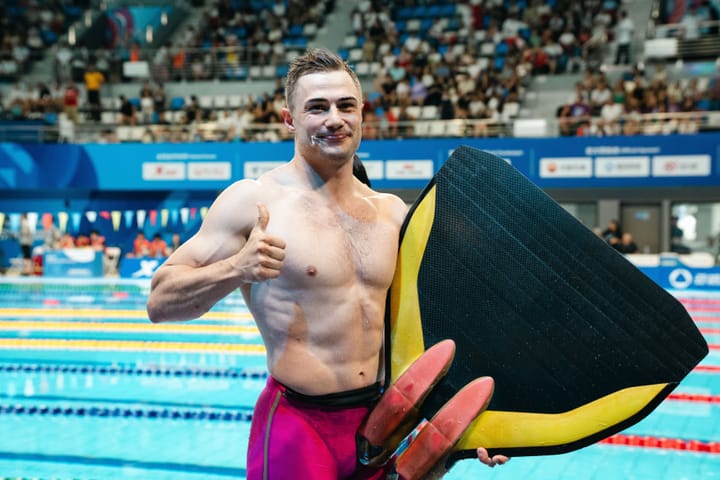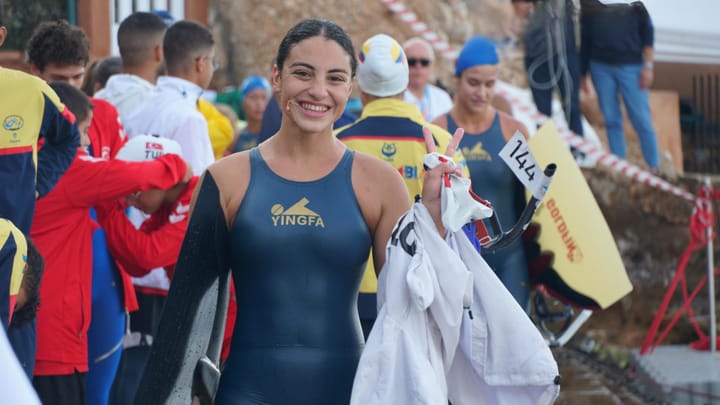Grace Dafoe's Unconventional Path to Elite Skeleton
Grace Dafoe googled "What sports can I start as an adult?" at 18. Twelve years later, the former figure skater made her World Cup skeleton debut after being cut twice from Canada's national team. Her systematic approach to elite sport challenges traditional athletic development models.

The Google Search That Led to Glory
In October 2012, Grace Dafoe typed a question into her laptop that would reshape her entire existence: "What sports can I start as an adult?" The 18-year-old figure skater from Calgary had reached a crossroads. Her childhood sport had plateaued. Her Olympic dreams felt distant. Within hours of hitting enter, she had enrolled herself in a skeleton sliding school.
Twelve years later, Dafoe stands among the world's elite skeleton athletes, having made her World Cup debut in January 2024 after a journey marked by systematic rejection, methodical improvement, and the kind of late-career breakthrough that challenges conventional athletic development models.
The Mathematics of Marginal Gains
Skeleton rewards precision over power. Athletes hurtle down ice tracks at speeds exceeding 140 kilometers per hour, separated from the ice by mere millimeters of steel runner. Victory margins often measure in hundredths of seconds. For Dafoe, this reality became both obstacle and opportunity.
"I realized I had to pay attention to the details and leave nothing to chance," Dafoe explains. "It was all about small consistent actions." This philosophy emerged from necessity rather than choice. Cut from Canada's national team twice, Dafoe faced a stark reality: her pathway to elite competition required systematic reconstruction of her approach.
The transformation began with coaching changes. Under Canada's current National Team Head Coach, Dafoe developed what she describes as enhanced communication and confidence. The partnership addressed skeleton's fundamental challenge—the sport demands absolute commitment to decisions made at lethal speeds.
Sports psychology became equally crucial. Skeleton athletes experience unique psychological pressures. Unlike track sprinters or swimmers, skeleton racers cannot adjust their technique mid-performance. Once launched, they must trust twelve years of accumulated instinct while managing doubt that manifests as "second guessing position in corners and over driving."
The Proof Point
December 2023 provided Dafoe's validation moment. At a race in Germany, she achieved a target result that earned her World Cup opportunity. The specificity matters—elite skeleton operates on concrete performance thresholds rather than subjective evaluations. Dafoe had spent over a decade building toward this single qualifying performance.
Her World Cup debut followed in January 2024, representing the culmination of progression from provincial slider through international competition to national program inclusion. The timeline challenges traditional athletic development models that emphasize early specialization and linear advancement.
The Psychology of Late-Start Excellence
Dafoe's non-traditional entry raises questions about athletic talent identification and development. Figure skating provided foundational balance and body awareness, but skeleton demanded entirely different skill sets. The sports share ice as their only common element.
"I don't forget that kid who took a chance on a dream," Dafoe reflects when comparing her current self to the uncertain university graduate who initiated this journey. The statement reveals crucial insight about late-start athletes—they often possess enhanced perspective about opportunity costs and alternative pathways.
Research in sport psychology suggests late-start athletes develop different mental frameworks than early specialists. They approach training with adult cognitive capabilities and decision-making processes. Dafoe's emphasis on "small consistent actions" reflects mature understanding of process-focused improvement rather than outcome-dependent validation.
The Paradox of Elite Competition
Despite reaching World Cup level, Dafoe describes minimal differences between elite and developmental competition beyond increased media presence and elevated nerves. "Once you start your run, you realize it's just like the other 1000 runs you've taken down a track."
This perspective challenges common assumptions about elite sport transformation. Media narratives often emphasize dramatic differences between competitive levels, but Dofoe's experience suggests continuity of fundamental skills and preparation routines.
The insight carries practical implications for developing athletes. Rather than viewing elite competition as qualitatively different, Dafoe's framework treats it as quantitative extension of existing capabilities. Her World Cup preparation mirrors provincial competition routines, adjusted for scale rather than revolutionized for context.
Leadership Through Process
As Dafoe approaches her final competitive season, she has shifted focus toward program contribution and legacy building. Her leadership philosophy emphasizes demonstration over instruction. "I show leadership through action—it's down to how you conduct yourself at the track and be professional in video sessions."
This approach reflects understanding of high-performance team dynamics. Elite athletes often resist direct coaching from peers, but they consistently observe and analyze teammate behaviors for applicable elements. Dafoe positions herself as resource rather than instructor.
Her timeline perspective extends beyond her competitive career. "We have quite a few newer athletes coming into the team, and I want to watch them from afar flourishing between 2026-2030, knowing I was a small part of their journey."
The Broader Implications
Dafoe's career trajectory offers evidence against rigid athletic development models. Her Google search methodology—systematic evaluation of adult-entry Olympic sports—suggests untapped talent pools exist among athletes whose traditional sports have plateaued.
The skeleton pipeline typically relies on talent identification from other sports. Track athletes provide sprinting capability for push starts. Bobsled athletes transition for sliding experience. Dafoe's figure skating background represents less common feeder sport, yet proved sufficient foundation for World Cup achievement.
Her advice to athletes considering second chapters emphasizes exploration over analysis: "Have an open mind and don't be afraid to try something new. Open the door and see what's behind it." The simplicity masks sophisticated understanding of opportunity assessment and risk management.
The Final Chapter
Dafoe enters her concluding season with specific targets: achieving top 45 world ranking and "removing doubt" from her competitive approach. The goals reflect her systematic methodology—concrete performance metrics combined with psychological optimization.
Her journey from mediocre figure skater to World Cup skeleton athlete demonstrates that athletic excellence can emerge from unconventional pathways. The timeline challenges assumptions about talent development windows and sport-specific preparation requirements.
The Google search that initiated this transformation represents broader questions about talent identification and athletic opportunity structures. How many potential elite athletes remain undiscovered due to narrow development pathways? Dafoe's career suggests the answer may be significant.
Her legacy will extend beyond personal achievements to proof of concept—that systematic approach and sustained commitment can overcome traditional barriers to elite sport participation. For athletes considering their own second chapters, Dafoe's journey provides both inspiration and practical framework for pursuit of seemingly impossible dreams.




Comments ()